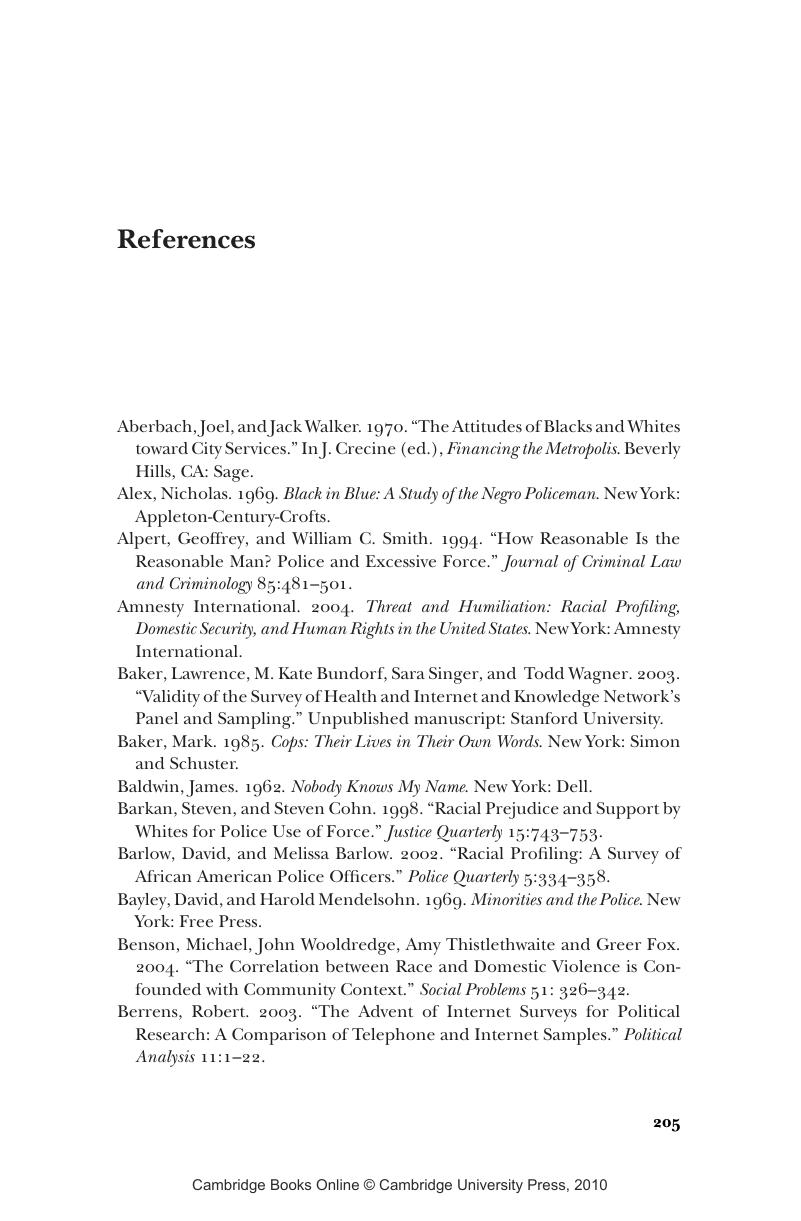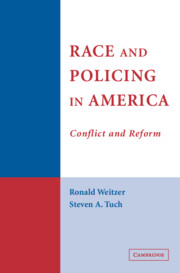Book contents
References
Published online by Cambridge University Press: 18 December 2009
Summary

- Type
- Chapter
- Information
- Race and Policing in AmericaConflict and Reform, pp. 205 - 220Publisher: Cambridge University PressPrint publication year: 2006



